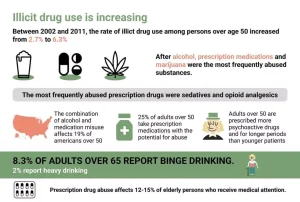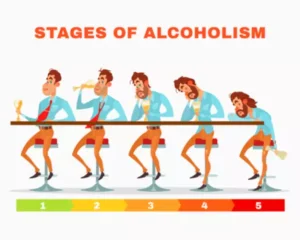
If you experience fruity breath that’s not caused by intentional changes to your diet, the scent of your breath may have more dire causes. Anyone thinking about trying a keto diet should speak with a doctor first. It is not safe for everyone, including those with liver failure, pancreatitis, and individuals already living with high cholesterol. The resulting increase in the NADH/NAD+ ratio inhibits hepatic gluconeogenesis and elevates the ratio of hydroxybutyric acid to acetoacetic acid. Acetic acid (an acyl group carrier) is linked with coenzyme A (a thiol) to produce Acetyl-CoA. Neurologically, patients are often agitated but may occasionally present lethargic on examination.
Long-term Alcohol Use Management
In general, the prognosis for a patient presenting with AKA is good as long as the condition is identified and treated early. The major cause of morbidity and mortality in patients diagnosed with AKA is under-recognition of concomitant diseases (that may have precipitated the AKA, to begin with). These include acute pancreatitis, gastrointestinal bleeding, and alcohol withdrawal. Mortality specifically due to AKA has been linked to the severity of serum beta-hydroxybutyric acid in some studies.

Other Symptoms
At Sabino Recovery, we understand the challenges that you or your loved one might face when dealing with alcoholic ketoacidosis and alcohol use disorder. Our expertise and compassionate approach aim to provide you with the support and guidance necessary to regain control over your health and well-being. If you have diabetes and are having a hard time dosing your insulin and managing your blood sugar, contact your provider.

Patient Education
For individual guidance around diabetes management, a person can also ask for a referral to diabetes self-management education and support (DSMES). This service provides tailored guidance and practical skills to manage diabetes in a way that suits a person’s lifestyle. If you’re following your treatment plan and your ketone level is moderate or high, call your doctor right away for help.
Treatment for alcohol addiction is also necessary to prevent a relapse of alcoholic ketoacidosis. If your blood glucose level is elevated, your doctor may also perform a hemoglobin A1C (HgA1C) test. This test will provide information about your sugar levels to help determine whether you have diabetes. Many people acquainted with alcoholics will notice that alcoholism causes bad body odor too, aside from alcoholics’ bad breath smell. This is because excess alcohol in the body can change the way your sweat smells, contributing to what is known as Alcoholic ketoacidosis (AKA) smell [3].
- Without enough insulin, the body begins to break down fat as fuel.
- For patient education information, see the Mental Health and Behavior Center, as well as Alcoholism and Alcohol Intoxication.
- While ketosis refers to any elevation of blood ketones, ketoacidosis is a specific pathologic condition that results in changes in blood pH and requires medical attention.
- If your doctor suspects that you’ve developed this condition, they may order additional tests to rule out other possible conditions.
- If it’s left untreated, the buildup can lead to diabetic ketoacidosis.
Other sources of acetone
In order to experience alcoholic ketoacidosis, a person often has to drink large quantities of alcohol, while also being malnourished. If you begin vomiting or have other symptoms of DKA, contact your healthcare provider immediately or go to the emergency room. A more recent abstract from 2014 also agrees with the effectiveness of using a breath test to screen for blood glucose levels. alcoholic ketoacidosis smell A person who consumes large amounts of alcohol may not have a healthful diet or eat enough food to provide their body with energy. If the breath of a person who does not have a diabetes diagnosis smells of acetone, they should see a doctor who can check for diabetes and other causes of the smell. DKA can cause the blood to become acidic and affect how the organs function.
Evaluation and management of the critically ill adult with diabetic ketoacidosis
- The prognosis for alcoholic ketoacidosis is good as long as it’s treated early.
- It can occur when the body does not have enough insulin to use sugar as energy.
- Wearing medical identification can help others know what to do in an emergency related to diabetes.
Alcoholic ketoacidosis (AKA) is a clinical condition primarily affecting individuals with a history of chronic alcohol use or binge drinking. It often occurs during periods of poor oral intake and includes symptoms such as nausea and vomiting, abdominal pain, and dehydration source. A distinct feature of AKA is the fruity smell of the breath due to a build-up of ketones in the body. It is important to recognize the symptoms of AKA, as timely intervention can significantly improve patient outcomes. The underlying pathophysiology is related to poor glycogen stores and elevated nicotinamide adenine dinucleotide and hydrogen.
Pathogenetic mechanisms of hypomagnesemia in alcoholic patients
Several mechanisms are responsible for dehydration, including protracted vomiting, decreased fluid intake, and inhibition of antidiuretic hormone secretion by ethanol. Volume depletion is a strong stimulus to the sympathetic nervous system and is responsible for elevated cortisol and growth hormone levels. During starvation, there is a decrease in insulin secretion and an increase in the production of counter-regulatory hormones such as glucagon, catecholamines, cortisol, and growth hormone. Hormone-sensitive lipase is normally inhibited by insulin, and, when insulin levels fall, lipolysis is up-regulated, causing release of free fatty acids from peripheral adipose tissue. Alcoholic ketoacidosis is a condition that can happen when you’ve had a lot of alcohol and haven’t had much to eat or have been vomiting.


